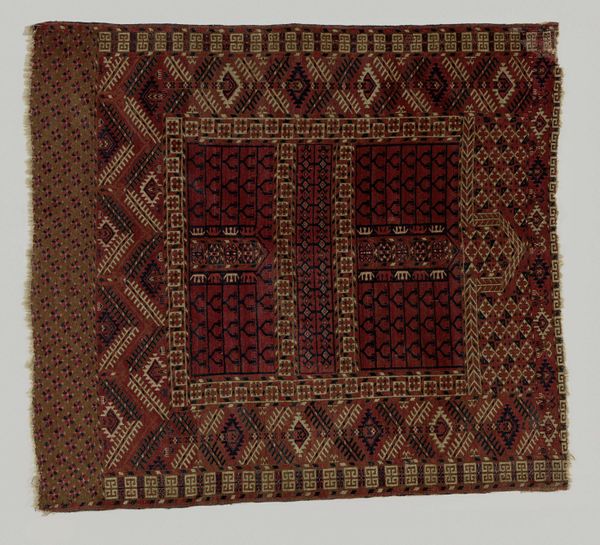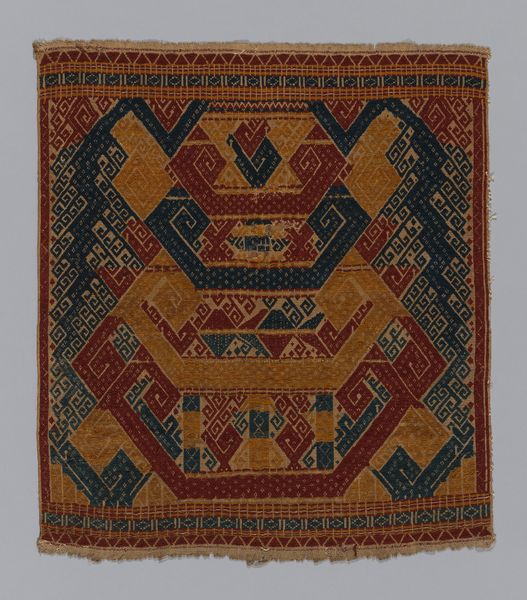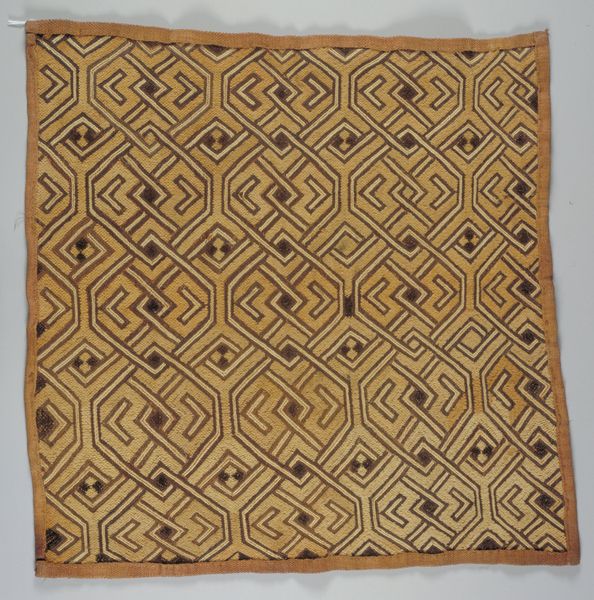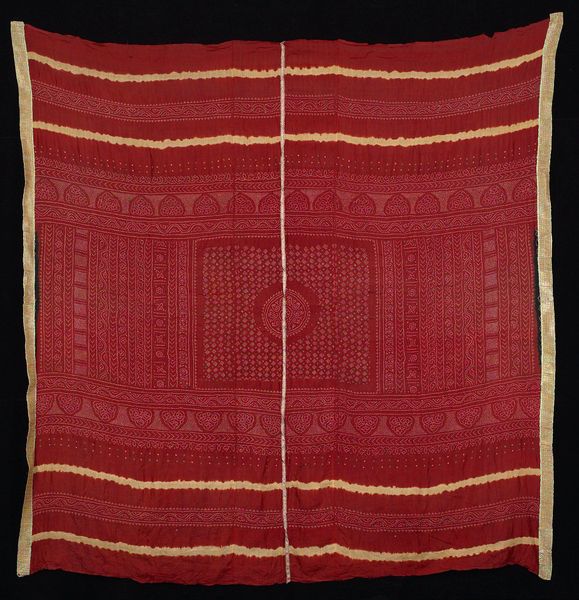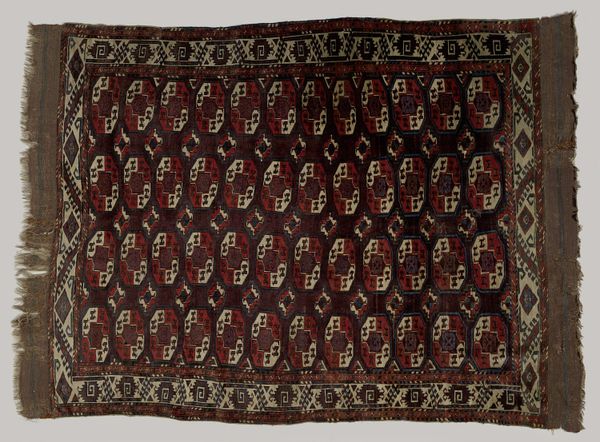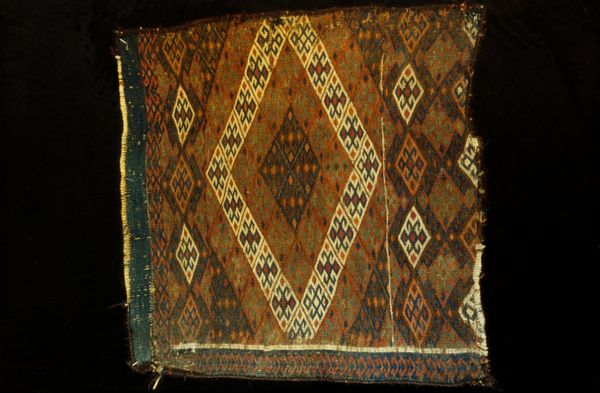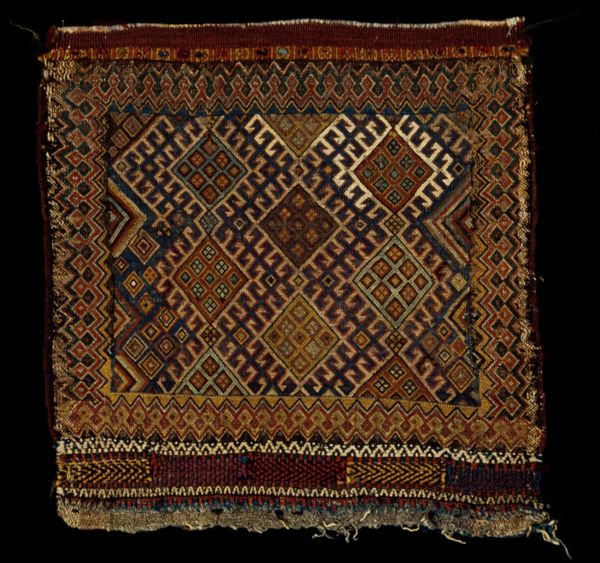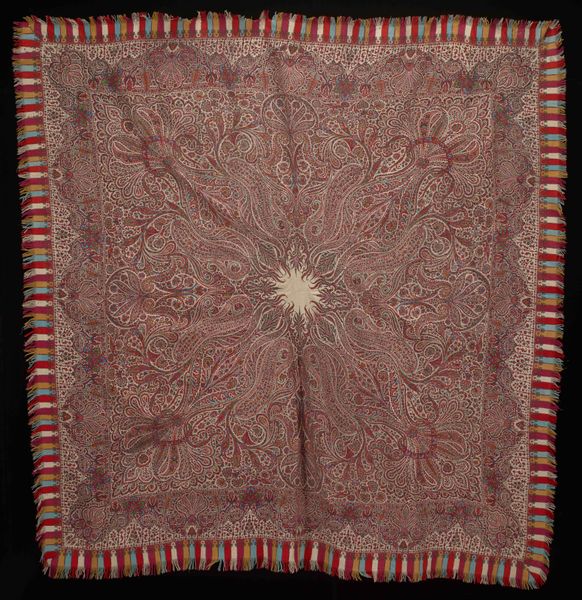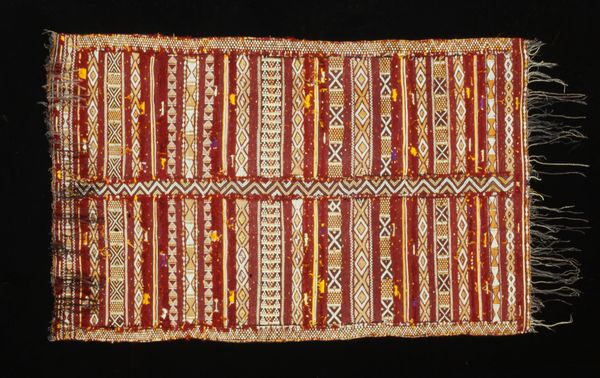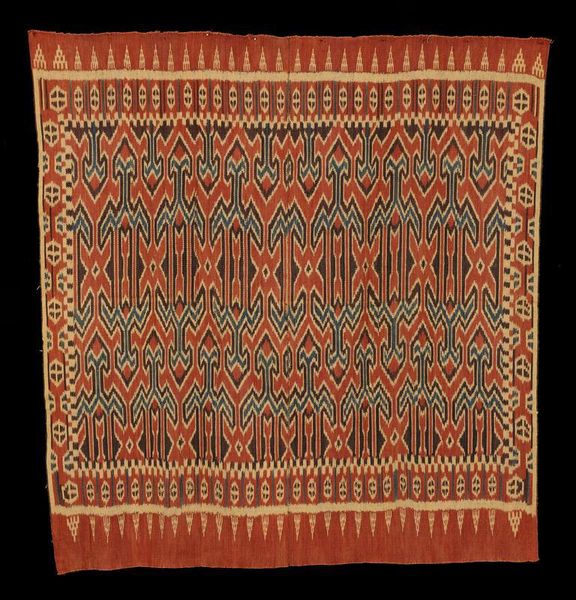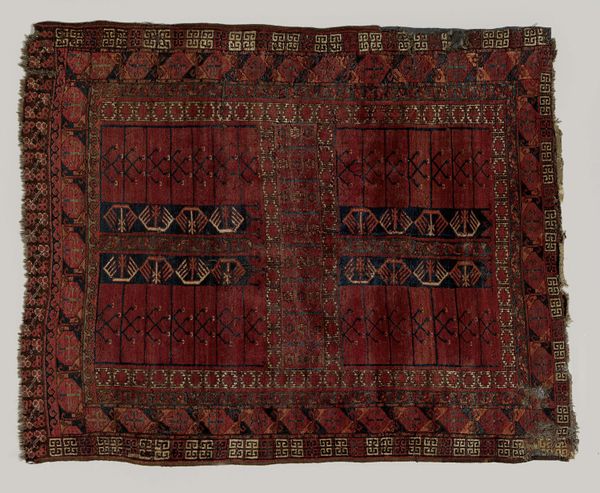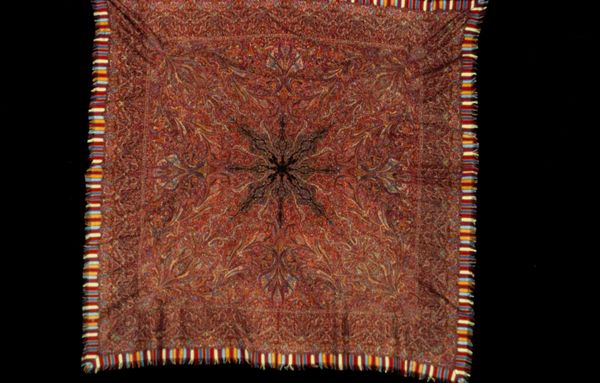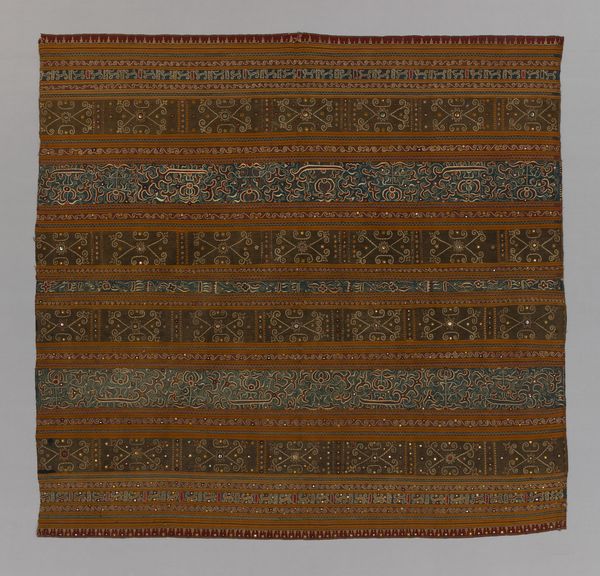
weaving, textile
#
natural stone pattern
#
weaving
#
textile
#
geometric pattern
#
abstract pattern
#
organic pattern
#
geometric
#
repetition of pattern
#
pattern repetition
#
textile design
#
decorative-art
#
imprinted textile
#
layered pattern
#
organic texture
Dimensions: height 141 cm, width 124 cm
Copyright: Rijks Museum: Open Domain
Curator: I find this "Oosters Tapijt", or "Eastern Carpet", fascinating; woven by the Tekke people sometime between 1850 and 1900. It’s such a rich piece of textile work. Editor: It certainly grabs the eye with its bold geometric fields. There's a strong horizontal emphasis, dividing the space with those rhythmic, almost architectural borders. The color palette feels quite grounded. Curator: Absolutely, those colours likely hold symbolic meaning specific to the Tekke culture, the deep reds often represent joy and prosperity, while the darker shades might relate to mourning or connection to the earth. And see how those repeating motifs act as a cultural mnemonic, narrating ancestral stories through these embedded symbols. Editor: You're right, the patterns certainly are potent. I’m struck by how these repeated elements, the diamonds, the squares, create a sense of controlled visual rhythm. It's almost as though each unit is carefully calculated within the larger composition, creating structure and form. It’s a masterclass in textile design. Curator: It speaks to a connection to something primal and deep. The intentional imperfections—the slight asymmetry—introduce an element of humanity that disrupts any sense of rigid perfection. In those imperfections, we glimpse their cultural memory and lineage. Editor: It's a testament to how complex visual relationships are negotiated and formalized, like a coded visual system defining internal aesthetics and relational identities. Curator: When encountering a piece like this, I am left wondering: What cultural truths, what family histories are woven into its threads, passed down through generations? How can we truly decode the values, struggles, and triumphs of a community, when so much context remains unseen? Editor: For me, it’s a demonstration of the potential within formal constraint. It has that inherent human element that really sets it apart. Curator: Well, that’s a lovely way to put it. A very apt insight. Editor: Indeed. Thank you for guiding us through such a remarkable object.
Comments
No comments
Be the first to comment and join the conversation on the ultimate creative platform.
